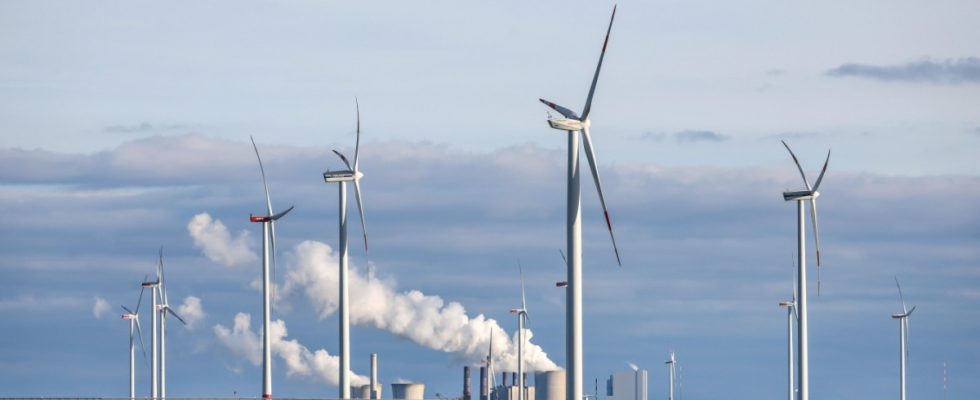Less electricity produced, but profits almost doubled: the first nine months of the year were extremely lucrative for the Essen-based electricity company RWE. “Our strong investment activity is paying off,” said Michael Müller, the DAX company’s CFO, on Tuesday at the Presentation of the quarterly figures. The company has invested in green electricity – more than ten billion euros have flowed into green energy since the beginning of the year. Like buying one US solar park operatorone British solar park developer or in our own wind and solar systems in Europe and the United States.
For many climate and environmental activists or opponents of nuclear power, RWE is something like a dirty dinosaur. Only at the beginning of the year, Germany’s largest electricity producer was in the headlines again because of the evacuation of an abandoned village at the Garzweiler open-cast brown coal mine. But the dinosaur is getting greener – and that’s paying off financially, as Tuesday’s figures show. Overall, the company with its almost 19,000 employees produced a sixth less electricity. Finally, RWE’s last nuclear power plant was shut down in April, and the German lignite plants also sent a third less electricity into the grid as a result of maintenance work. At the same time, the production of green electricity increased by a quarter, also thanks to purchases and investments.
These plants now account for a third of RWE’s electricity mix and produce more energy than the climate-damaging lignite-fired power plants. Practically speaking, wind and solar parks retain much more profit from every euro of sales than fossil power plants. Accordingly, profits in the group’s green divisions increased compared to the previous year, while they fell at coal and nuclear power plants. Overall, the company earned 6.2 billion euros before interest, taxes, depreciation and amortization, 82 percent more than in the same period last year. The bottom line was a profit of 3.4 billion euros.
The profits from wind and solar systems could have been even higher if the prices that RWE was able to collect had not fallen. However, in the case of wind farms on the high seas, i.e. offshore systems, the company benefited from the fact that it had already sold part of the production in advance at high prices.
The British pay a lot for RWE’s electricity
The group’s British gas-fired power plants also made a major contribution to RWE’s steep rise in profits. In the country there is an “increasing shortage” of power plants that can step in if wind and solar parks do not produce enough, said CFO Müller. RWE’s gas power plants were able to fulfill this role; they were started up at short notice during such hours – and made great money from it.
In Germany, RWE will shut down its climate-damaging lignite-fired power plants by 2030 – although Federal Finance Minister Christian Lindner (FDP) has just sown doubts about the coal phase-out this year. Until then, the Essen-based company would like to build gas power plants that, just like in Great Britain, step in when there is too little wind and too little sun. These power plants should also be able to burn climate-friendly hydrogen instead of natural gas. However, these systems are only supposed to run for a few hours. In order for the high investments in the stability of the supply to still be worthwhile, the state must support these projects. However, the federal government has still not presented a concept for this. “Something has to happen quickly,” said Müller, so that RWE has planning security and can push ahead with investments in the coming year.
Overall, RWE plans until 2030 more than 50 billion euros to invest in green energies and gas power plants, including up to 15 billion euros in Germany. The company plans to present an update to this strategy in two weeks. Müller didn’t give any details, but said: “We have a lot planned.”

